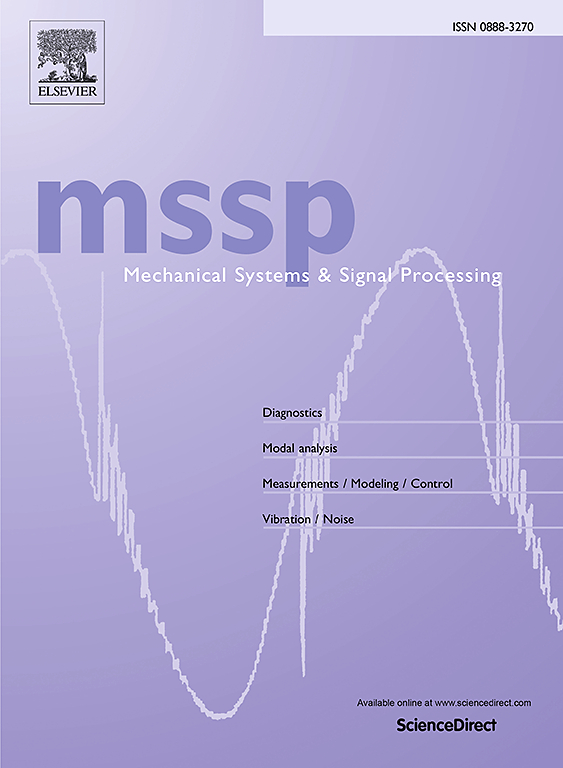Automated Operational Modal Analysis of self-excited vibrations in turning
IF 7.9
1区 工程技术
Q1 ENGINEERING, MECHANICAL
引用次数: 0
Abstract
Regenerative chatter is a prevalent issue in machining, stemming from the instability of self-excited vibrations within the tool or workpiece. Operational Modal Analysis (OMA) of the tool or workpiece vibrations during turning operations is an effective method to predict and mitigate chatter. However, it requires substantial input from an expert user, undermining its application in process monitoring.
This paper presents an Automated Operational Modal Analysis (AOMA) approach to eliminate user intervention from the online chatter prediction process. The proposed approach combines clustering algorithms with knowledge about the system’s underlying physics to eliminate spurious poles as well as those representing the undamped harmonic oscillations. As a result, the dominant pole of self-excited dynamics is identified automatically, quantifying the stability of process vibrations. The accuracy and effectiveness of the proposed method are validated through experiments and numerical simulations.
车削自激振动的自动运行模态分析
再生颤振是加工中一个普遍存在的问题,源于刀具或工件内部自激振动的不稳定性。车削过程中刀具或工件振动的运行模态分析(OMA)是预测和减轻颤振的有效方法。然而,它需要专家用户的大量输入,从而破坏了其在过程监控中的应用。本文提出了一种自动操作模态分析(AOMA)方法来消除在线颤振预测过程中的用户干预。提出的方法将聚类算法与系统底层物理知识相结合,以消除假极点以及代表无阻尼谐波振荡的极点。该方法可自动识别自激动力学的主导极,量化过程振动的稳定性。通过实验和数值模拟验证了该方法的准确性和有效性。
本文章由计算机程序翻译,如有差异,请以英文原文为准。
求助全文
约1分钟内获得全文
求助全文
来源期刊

Mechanical Systems and Signal Processing
工程技术-工程:机械
CiteScore
14.80
自引率
13.10%
发文量
1183
审稿时长
5.4 months
期刊介绍:
Journal Name: Mechanical Systems and Signal Processing (MSSP)
Interdisciplinary Focus:
Mechanical, Aerospace, and Civil Engineering
Purpose:Reporting scientific advancements of the highest quality
Arising from new techniques in sensing, instrumentation, signal processing, modelling, and control of dynamic systems
 求助内容:
求助内容: 应助结果提醒方式:
应助结果提醒方式:


